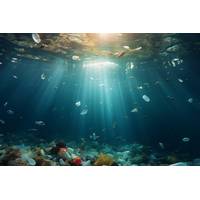
Microplastics Becoming Measurable Part of Ocean’s Carbon Cycle
tons of plastic enters the ocean every year. Microplastics – ranging from 1 micron to 5 millimeters – make up most of the plastic pieces found.Most research has focused on surface waters, usually sampling just the top 15 to 50 centimeters using net tows, but a researcher from Florida Atlantic University (FAU) is among an international team of scientists who has mapped microplastic distribution from the surface to the deep sea at a global scale.The researchers synthesized depth-profile data from 1,885 stations collected between 2014 and 2024 to map microplastic distribution patterns by
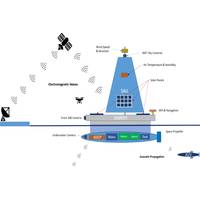
Autonomous Multi-Vehicle System Designed for Long-Term Arctic Studies
ice. Moreover, traditional ocean observation methods offer limited temporal and spatial coverage, while drones and AUVs are hindered by energy constraints that restrict their research potential.To overcome these challenges, researchers from the College of Engineering and Computer Science at Florida Atlantic University have proposed a design of an alternative, autonomous observational method that features a small waterplane area twin hull (SWATH) vessel that acts as a docking and charging station for AUVs and UAVs.The SWATH ship is engineered for exceptional stability, allowing it to navigate through
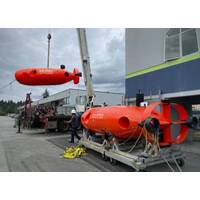
Nauticus Robotics' Subsea Robot Set for Further Trials in Florida
Subsea autonomous robot maker Nauticus Robotics has entered into partnership with Florida Atlantic University (FAU) for further testing of its flagship underwater vehicle, Aquanaut Mark 2.Nauticus and FAU will perform Aquanaut Mark 2 vehicle development testing in the protected waters near the university's Institute for Ocean and Systems Engineering Dania Beach facilities as well as in the deeper waters of the Atlantic Ocean.This partnership is expected to result in approximately 90% savings on vehicle development testing.This phase of testing requires both shallow and deeper waters to fully test
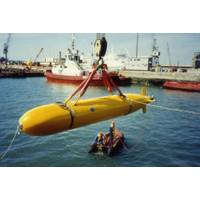
Subsea Vehicles: Diving into the Autosub Program
; It was a new arena. When the Autosub 1 was first presented, there were just 36 other AUVs known at that time. “They designed all the pressure vessels, they did all the testing, they built all the control architecture,” says Furlong. Part of the latter was in collaboration with Florida Atlantic University using Lonworks modules, enabling a distributed control architecture, which remained with the vehicles right through to Autosub6000. “The distributed architecture of the system was really ground breaking,” he says. Operations in 1999, with Autosub 2 in Antarctica. All

Scientists Come Closer to Solving Caribbean Seaweed Mystery
to 2019 offers the strongest evidence yet that water coming from city and farm runoff has been a major contributor to expansion of the so-called Great Atlantic Sargassum Belt, which now stretches for nearly 9,000 kilometers.Nitrogen runoffThat study, co-authored by biologist Brian Lapointe at Florida Atlantic University, found that sargassum collected recently in coastal waters from Brazil to the southern United States, and including several Caribbean nations, contained levels of nitrogen that were 35% higher on average than in samples taken more than three decades earlier. The findings were published
US Navy Testing New Anti-submarine Technology
system components followed by progressively more inclusive integration and testing until the full ASW Mission Package has been tested.The Dockside-1 test a week prior to the Seneca Lake event had LCS Sailors overseeing and actively engaging in the operation of the DART Mission System at the Florida Atlantic University Harbor Branch Oceanographic Institute's waterside product integration, assembly and test complex.Dockside-2 testing, planned for autumn 2018, will expand the scope of DART system integration to add three additional Raytheon mission modules to complete the system. The Navy will take
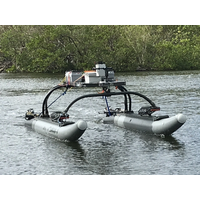
Autonomous Vessels: FAU Gets $1.25m for Research
Florida Atlantic University’s College of Engineering and Computer Science has been awarded a $1.25 million grant by the United States Office of Naval Research (ONR) to undertake research in support of autonomous unmanned marine vehicle platforms for coastal surveillance, coastal surveys, target tracking and protection of at-sea assets. The five-year project will entail developing unmanned surface vehicles that serve as “motherships” for unmanned underwater vehicles and aerial drones, thereby enabling multi-vehicle, multi-domain capability that may serve as a mobile coastal monitoring

Anderson Joins EdgeTech
based in the company’s Boca Raton, Fla. office. Previously with National Oceanic and Atmospheric Administration (NOAA) Office of Coast Survey, Anderson brings extensive hydrographic expertise to the organization. He has a Bachelor of Science in Ocean Engineering from Florida Atlantic University, Master of Science in Hydrography and Category “A” International Hydrographic Certification. Anderson has over 10 years of experience in the field of marine surveying working with equipment such as side scan sonars, single beam and multibeam sonar systems. While

US Awards $20 Mln for Wave and Tidal Energy Projects
and the marine environment: BioSonics Inc. of Seattle, Washington, will develop an active acoustic monitoring system to automatically detect and locate wildlife at ranges between 200 and 300 meters. The monitoring system will track wildlife near MHK devices in three dimensions. Florida Atlantic University of Boca Raton, Florida, will improve the capabilities of existing light imaging, ranging, and detection tools. While reducing production costs, this project could provide a powerful new tool to observe marine animal interactions with MHK devices, particularly in murky or low light conditions

 August 2025
August 2025





